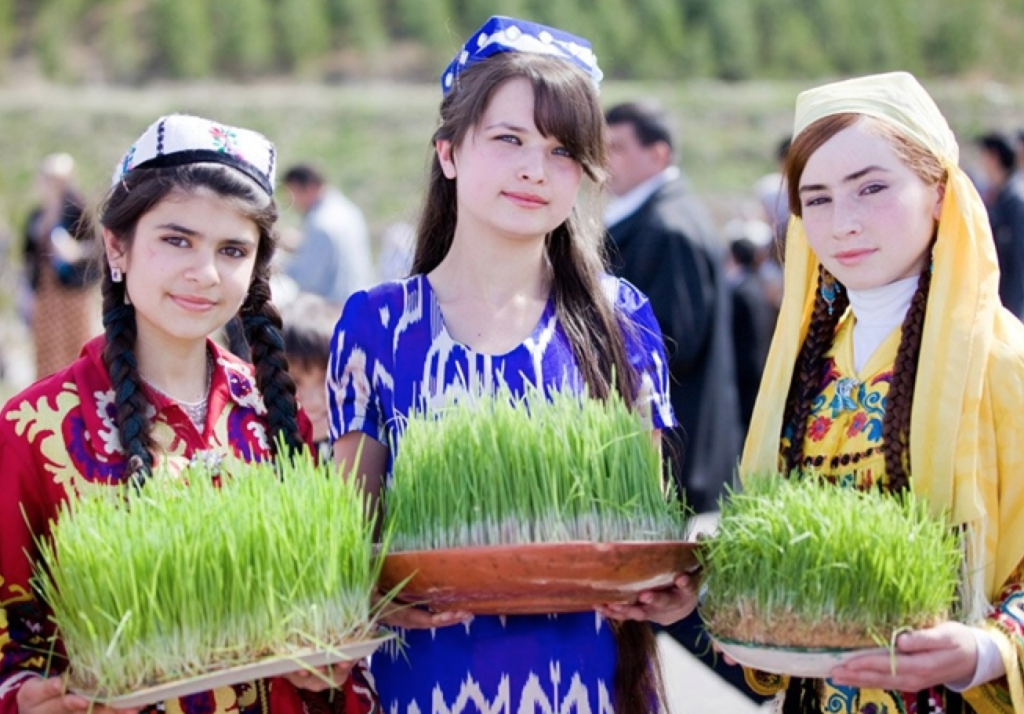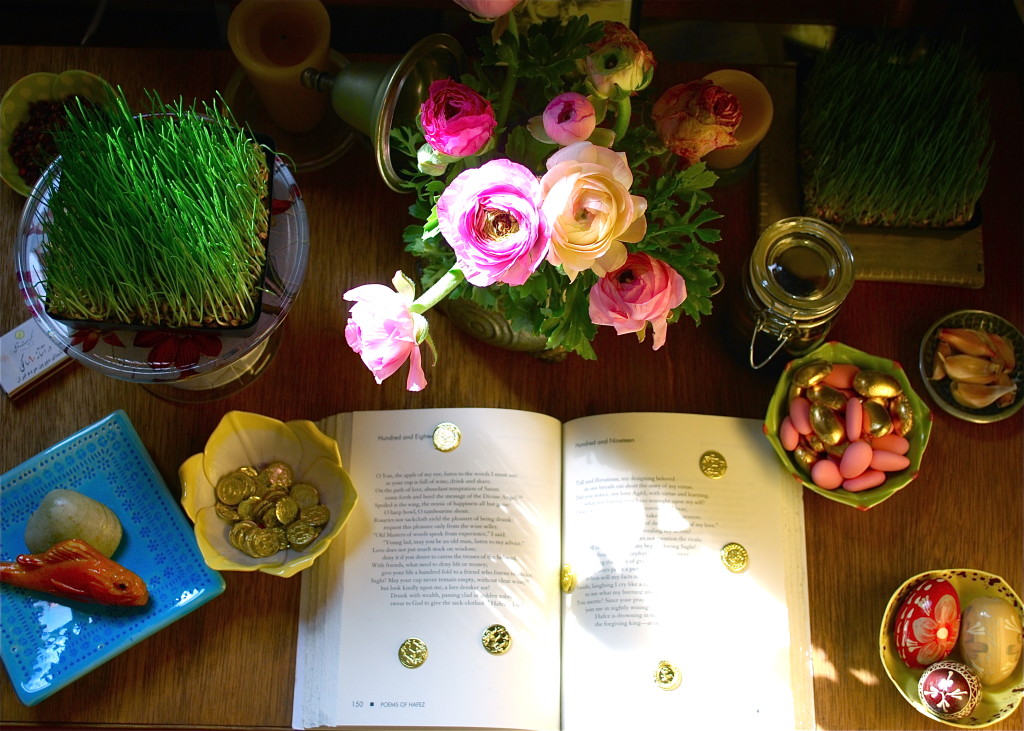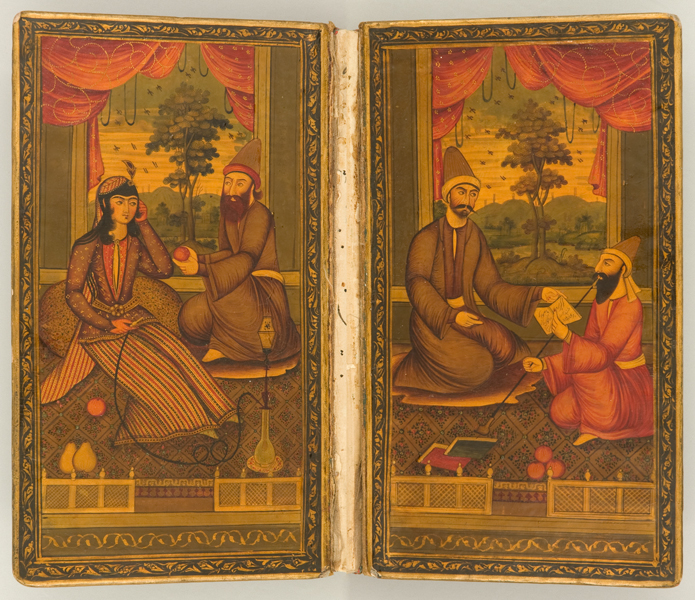Tonight we celebrate the Joy of Spring, Nowruz, with very good friends
A festivity of the joy of spring. Nowruz (Persian: نوروز, “[The] New Day”) it is at least 3,000 years old. The first day of the Persian calendar, this year the holiday began on March 21st and lasts for 12 days. This date makes so much more sense to me than January 1st. For me life begins with spring.
It is a secular holiday, yet Nowruz is deeply rooted in the rituals of the Zoroastrian religion. It is celebrated and embraces the unique cultures of Iran, Azerbaijan, Afghanistan, Tajikestan, Pakistan and parts of India and among the Kurds. And all over the world by people of these wonderful lands. We will be celebrating in Montclair in NJ.
The photo “Tajik girls celebrate Nowruz in Dushanbe, Tajikestan” is from the website of Dr. Kaveh Farrokh who is dedicated to the Advancement of Ancient Iranian and Classical Studies.
On of the most important Nowruz rituals is the setting of a
Haft-Seen Table
In the Persian language haft is the word for 7 and letter S. The haft-seen table is set with seven symbolic items that start with the letter S.
Family members gather together and create their table by first spreading a special family cloth on the table, a cloth I imagine that has been passed from generation to generation. On the table are placed the families most ornamental bowls contain:
Sumac (crushed spice of berries): For the sunrise and the spice of life
Senjed (sweet dry fruit of the lotus tree): For love and affection
Serkeh (vinegar): For patience and age
Seeb (apples): For health and beauty
Sir(garlic): For good health
Samanu (wheat pudding): For fertility and the sweetness of life
Sabzeh (sprouted wheat grass): For rebirth and renewal of nature
Depending on each family’s traditions other symbolic items are placed on the table. An heirloom mirror to inspire reflection on the past year, or a symbol of the earth an orange in a bowl of water. Some families have a swimming goldfish as a symbol of new life, or hand colored eggs for fertility, perhaps collected coins for prosperity, blooming hyacinths to symbolize spring, and often bright candles as a light of happiness.
This Nowruz includes the beliefs of all peoples of these lands you are likely to find on their table the family’s Qur’an, the holy book of Islam, or the Shahnameh, an epic Persian story of colorful kings and princes written around the year 1000 CE.
Persian poet Shams ud-Din Hafez
You will also find a book of poetry by the famous Persian poet Shams ud-Din Hafez. Persians consider Hafez to be their national poet, who is as known and highly regarded as Shakespeare in the western world.
Doublures inside a 19th-century copy of the Divān of Hafez. The front doublure shows Hafez offering his work to a patron.
Chahar Shanbe Suri
is another tradition that begins the holiday on the night of thelast Wednesday of the old year, it is celebrated where people symbolically cast off sadness, suffering and bad times of year now gone by lighting small bonfires and jump over the flames, shouting “Zardie man az to, sorkhie to az man,” which means, “May my sickly pallor be yours and your red glow be mine.” We could all benefit from casting off some of our past and Chahar Shanbe Suri can be celebrated by just lighting a candle light a flame and shouting the phrase.
Photo by Philippe Giabbanelli Celebrating Chahar Shanbe Suri in West Vancouver
Norooz 2015: Dates, Traditions, And History Of The Persian New Year Huffington Press
Places to Go, Things to Do • Dining Shopping
Beer Wine Cocktails • About the Authors



